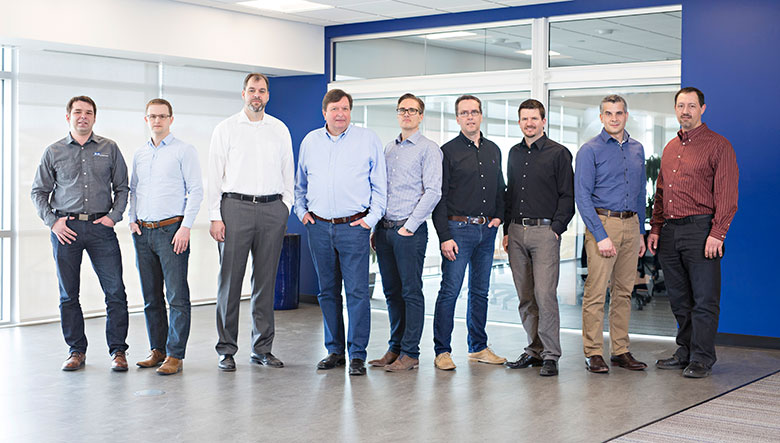German and Canadian Engineers Collaborate to Build a Legacy
06-01-2015
German and Canadian Engineers Collaborate to Build a Legacy

A collaborative effort combining the best of German and Canadian engineering and leadership, and marshaling the talent and experience of hundreds of engineers, has successfully advanced the $4.1 billion Legacy Project through the detailed engineering phase. The work was carried out on time and with a design that meets the business case of eventually producing 2.86 million tonnes of potash annually.
“We, in our department, are now shifting our focus from detail engineering to monitoring the quality of the pieces manufactured and installed and supporting field engineering,’’ says Markus Midden, Vice President of Engineering for K+S Potash Canada (KSPC). Field engineering is a term that describes dealing with the gaps, clashes, errors, and design failures that inevitably arise during the engineering and construction phases of such large projects, he explained. But while Midden applauds the collaboration between German and Canadian engineers working with Amec Foster Wheeler (the project management firm) he notes the process took time.
“Everything wasn’t perfect and brilliant at the beginning,’’ says Midden. “We all had to go through a learning curve. Amec had to understand how we normally work on projects. And we, as Germans, had to learn that we can’t just take the engineering approach we use in Germany and apply it here.’’
Dave Myers, Amec technical director on the Legacy Project says, “We had to figure out how to bring it together, see what everybody does best, and build the best mousetrap. I think we did pretty well there.’’

Finding that “best mousetrap” involved a series of reorganizations that eventually saw KSPC engineers operating within a Technical Authority Team (TAT) responsible for all technical content of the project. Amec engineers worked as the Legacy Project Execution Team (LPET) providing options and recommendations to TAT and then carrying out TAT’s decisions.
Midden and Myers agree a key move saw German engineer and project management specialist Jochen Kirn embedded in Amec’s LPET team as integration manager for the two groups. Kirn worked closely with Myers – their offices were located next to each other – but also kept in close contact with TAT. Kirn’s understanding of how Amec carries out projects and his background in project processes and procedures played an important role in helping the two groups work together.
“As the owner’s team, we learned to concentrate our efforts on what we know best, and that is what we’ve been doing for more than 100 years producing potash. It’s not developing greenfield megaprojects in a western Canadian construction environment, let alone climate,’’ says Kirn.
“Communication and trust were absolutely key to making the process work,’’ says Thomas Papst, Senior Area Manager, Process Plant for KSPC and a lead on the TAT team. But he said these are things that can take time to develop, especially when different cultures and languages are at play.
Papst agrees Amec has a good deal of experience working with large potash projects and contractors in Western Canada. But he points out German engineers have many years of experience dealing with potash mines in Europe – KSPC’s parent company, K+S Group, has five active potash mines right now. This gave the German side more up-to-date knowledge of the technological advances in potash mining, he says.
“Both sides brought advantages,’’ says Papst. “In the end, I think the mix of both ended up being the best way to do things.’’
“Anytime you work through difficulties with somebody, it builds a very strong relationship. We had to adapt and overcome, and we did it together,’’ says Myers.